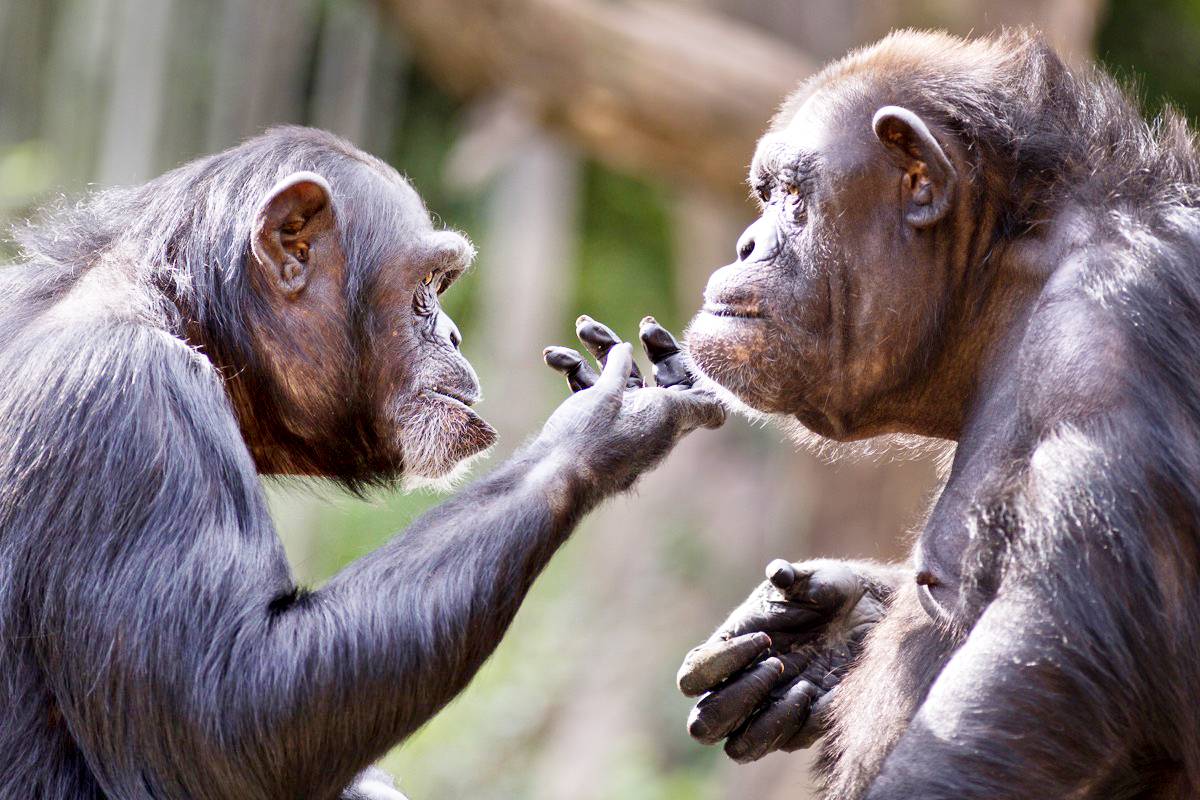Animals have long fascinated humans with their complex behaviors, intricate communication methods, and social interactions. Whether it’s the intricate dances of bees, the nurturing calls of elephants, or the territorial barks of dogs, animal behavior reveals a wealth of information about their lives, needs, and survival strategies. Understanding how animals communicate and interact is crucial for both wildlife conservation and improving our relationships with domesticated animals.
This article explores the fascinating world of animal behavior, breaking down the ways in which animals communicate, how they interact with one another, and the underlying principles that govern their actions. From body language and vocalizations to social structures and environmental cues, animals exhibit a range of behaviors that serve to ensure their survival, reproduction, and social cohesion.
1. The Basics of Animal Behavior: Instinct vs. Learning
At the core of animal behavior lies the interplay between instinctive (innate) and learned behaviors. While instincts are genetically programmed actions that do not require learning (such as a bird migrating or a cat hunting), learned behaviors are acquired through interaction with the environment or experience. The balance between these two influences shapes how animals respond to their surroundings.
A. Instinctive Behaviors
Instinctive behaviors are automatic and typically appear in animals as a response to specific environmental stimuli. These behaviors are crucial for survival and reproduction, such as:
- Migratory Patterns: Birds migrating over long distances to find food or suitable mating environments.
- Feeding Behaviors: A wolf instinctively knows how to hunt prey, and a baby sea turtle knows to head for the ocean after hatching.
B. Learned Behaviors
Learned behaviors are shaped by the animal’s experiences. These include:
- Problem-Solving Skills: An octopus opening a jar to get food.
- Social Learning: Young animals learning survival skills by observing their parents.
In nature, animals continuously adapt to their environments, developing both instinctive and learned behaviors to cope with challenges and opportunities.
2. Animal Communication: A Complex Language
Animals communicate with each other to convey information about their environment, their emotions, or their needs. These communication methods can range from vocalizations to body language and even chemical signals. Though humans often think of communication in terms of speech, animals use a variety of sensory cues to communicate.
A. Vocal Communication
Many species use vocalizations to communicate. The sounds they make can convey emotions, alert others to danger, or signal mating readiness:
- Dogs: Dogs use barking to alert their owners of an intruder, warn others of danger, or get attention. Each bark may differ in pitch, intensity, and frequency, signaling different meanings.
- Whales: Whales use complex songs to communicate across vast distances, especially during mating season.
- Birds: Birds use songs to claim territory, attract mates, or communicate with others in their flock.
B. Body Language
Animals, particularly social species, rely heavily on body language to communicate their feelings and intentions. This includes posture, facial expressions, and movement patterns:
- Dogs: A wagging tail often signals friendliness, while a raised hackle may indicate fear or aggression.
- Cats: Cats communicate through subtle body movements, like the flicking of their tail, changes in ear position, and posture. A puffed-up tail indicates fear, while purring signals contentment.
- Horses: A horse will often communicate its mood with its body posture. Ears back might signal anger or annoyance, while forward ears suggest curiosity or interest.
C. Chemical Communication
Many animals, particularly insects and some mammals, use chemicals (called pheromones) to communicate. Pheromones can signal territory, mating readiness, or danger:
- Ants: Ants use pheromones to leave trails that lead others to food sources or indicate danger.
- Dogs and Cats: Dogs and cats have scent glands and use their sense of smell to identify territory, other animals, and even emotions. This is why dogs often sniff each other when they meet.
3. Social Behavior: Hierarchies and Group Dynamics
For many species, social behavior is essential for survival, and animals often live in groups or herds. These groups provide protection, increase efficiency in hunting, and improve opportunities for reproduction. Social animals develop structured systems to organize their group activities and roles, often defined by a hierarchy or dominance structure.
A. Social Hierarchies
In many species, social hierarchies determine access to resources, mating opportunities, and protection. Dominant individuals often control the group’s resources, while subordinate members may have fewer privileges. Examples include:
- Wolves: In a wolf pack, the alpha pair leads the group, making decisions on hunting and territory.
- Primates: Apes and monkeys often establish dominance through displays of strength, behavior, and social relationships.
- Cattle: Cows within a herd establish a pecking order that influences feeding and resting positions.
B. Cooperation and Altruism
Not all animal behaviors are motivated by selfishness or survival. Some species exhibit altruistic behaviors, where individuals work together for the good of the group, even if it means personal sacrifice. Examples include:
- Meerkats: Meerkats take turns as “lookouts,” standing guard to watch for predators while the rest of the group forages for food. The lookout may risk its own safety to protect others.
- Dolphins: Dolphins work together to herd fish into tight schools, making hunting more efficient for the entire pod.
4. Reproductive Behaviors: The Drive to Reproduce
Reproductive behavior is a crucial aspect of animal life. The primary goal of most animal behaviors is to ensure the survival of their genes, and reproduction is at the heart of this. Animal courtship behaviors, mating rituals, and parental care are all behaviors designed to increase the chances of successful reproduction.
A. Courtship and Mating Rituals
Many animals engage in elaborate courtship displays to attract mates, demonstrating their fitness and suitability for reproduction:
- Birds of Paradise: Male birds of paradise perform intricate dances and display their vibrant plumage to attract females.
- Frogs: Male frogs croak loudly to attract females, with the loudest and most persistent calls often winning the female’s attention.
B. Parental Care
Parental care is crucial for ensuring the survival of offspring, particularly for species that invest significant time and energy into raising their young:
- Elephants: Female elephants play an important role in nurturing and protecting their calves. Extended family members also help with the care of the young.
- Penguins: Emperor penguins display remarkable teamwork, with both parents taking turns incubating the eggs and keeping them warm in the frigid temperatures of the Antarctic.
5. Communication in Non-Social Animals
While much of animal behavior is observed in social animals, even solitary animals engage in complex behaviors and communicate with their environment. These behaviors may be aimed at survival, territory defense, or locating food.
A. Territoriality
Many animals establish and defend territories to ensure access to resources, mates, and shelter:
- Lions: Male lions defend their pride’s territory from other males, using loud roars and scent marking to announce their presence.
- Snakes: Some species of snakes are highly territorial and will fiercely defend their burrows or hunting grounds from rivals.
B. Hunting and Feeding
Animals also display unique hunting and feeding behaviors that allow them to survive in their environments:
- Cheetahs: Cheetahs use stealth and speed to chase down their prey in a burst of speed.
- Octopuses: Octopuses are skilled at using their intelligence and camouflage to catch prey, often using tools to access food.
6. How Animal Behavior Relates to Human Understanding
Human-animal relationships are shaped by the behaviors of animals. Understanding animal behavior helps us care for domesticated animals, train them, and improve animal welfare. It also helps us better understand wildlife, their needs, and the impact of human activity on animal populations.
A. Training and Behavior Modification
Many domesticated animals, particularly dogs and horses, can be trained to follow specific commands and exhibit behaviors that are desirable for human interaction. Understanding the way animals learn—through positive reinforcement or punishment—allows owners and trainers to develop successful strategies for behavior modification.
B. Conservation and Wildlife Protection
In the context of conservation, understanding animal behavior is critical for developing strategies to protect endangered species. It enables researchers to predict patterns in migration, mating, and feeding, helping to create effective conservation programs.
Conclusion
The study of animal behavior offers valuable insights into the lives of animals and their interactions with each other and the environment. Animals communicate in diverse and fascinating ways—whether through vocalizations, body language, or chemical signals—and these behaviors are vital for their survival, social structure, and reproduction. By understanding these behaviors, we can foster stronger relationships with our pets, improve conservation efforts for endangered species, and ensure the welfare of animals in both domestic and wild settings.
From the bonding rituals of dolphins to the territorial displays of lions, animal behavior is an ongoing testament to the complexity and diversity of life on Earth. As we continue to explore the ways in which animals communicate and interact, we gain a deeper understanding of their worlds—and our place within them.
Key Takeaways:
- Animal behavior is shaped by a combination of instinct and learning, with both influencing survival and reproduction.
- Communication in animals occurs through vocalizations, body language, and pheromones.
- Social animals live within structured hierarchies, demonstrating cooperation and even altruism.
- Reproductive behaviors, including courtship rituals and parental care, are essential for ensuring the survival of offspring.
- Understanding animal behavior enhances pet care, animal training, and conservation efforts, promoting both human-animal relationships and wildlife protection.

